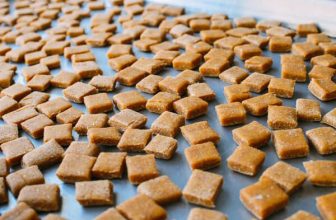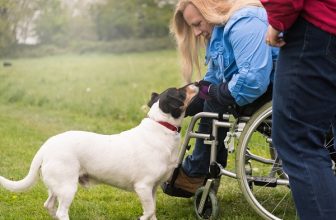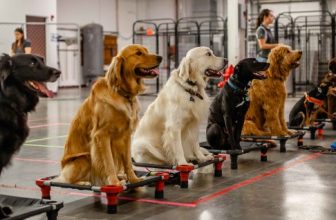
Learn how to train a small puppy effectively with expert tips and advice. Discover techniques for housebreaking, obedience training, and more. Start your journey to a well-behaved furry companion!
Welcoming a small puppy into your home is an exciting and heartwarming experience. However, along with the joy comes the responsibility of proper training to ensure that your furry friend grows into a well-behaved and obedient companion. Training a small puppy requires patience, consistency, and understanding. In this comprehensive guide, we will walk you through the various aspects of training a small puppy, from basic commands to housebreaking and socialization.
How to Train a Small Puppy
Training a small puppy is a rewarding journey that requires dedication and time. Here’s a step-by-step guide to help you achieve successful training:
Establish a Strong Bond
Building a strong bond with your puppy is the foundation of effective training. Spend quality time together, engage in play, and offer plenty of positive reinforcement.
Use Positive Reinforcement
Positive reinforcement is key to successful training. Reward your puppy with treats, praise, and affection whenever they exhibit desired behaviors. This encourages them to repeat these behaviors.
Start with Basic Commands
Begin training with basic commands like “sit,” “stay,” “come,” and “down.” Use treats and praise to reward your puppy when they follow these commands correctly.
Be Consistent
Consistency is crucial in training. Use the same commands and cues consistently, and ensure that all family members are on the same page with the training approach.
Practice Patience
Puppies are like sponges, absorbing information gradually. Be patient and understanding during the training process. Avoid punishment and focus on positive reinforcement.
Socialize Your Puppy
Socialization is vital for a well-adjusted puppy. Expose your puppy to various people, animals, and environments to help them develop confidence and good behavior.
Address Behavioral Issues Promptly
If your puppy displays behavioral issues, such as biting or excessive barking, address them promptly. Seek guidance from a professional dog trainer if needed.
Crate Training
Crate training helps with housebreaking and provides your puppy with a safe space. Introduce the crate gradually and make it a positive and comfortable environment.
Housetraining
Housetraining is a fundamental aspect of puppy training. Take your puppy outside frequently, especially after eating or drinking, and reward them for eliminating outside.
Leash Training
Teaching your puppy to walk on a leash without pulling is essential. Start in a quiet environment, use treats to encourage walking beside you, and gradually introduce distractions.
Obedience Classes
Consider enrolling your puppy in obedience classes. These classes provide structured training and socialization opportunities under the guidance of a professional trainer.
Stay Calm and Positive
Maintain a calm and positive demeanor during training sessions. Your puppy can sense your emotions, so staying relaxed will create a more conducive learning environment.
Manage Your Expectations
Remember that puppies are still learning and growing. Set realistic expectations and celebrate small achievements along the way.
Gradually Increase Challenges
As your puppy becomes more skilled, gradually increase the difficulty of training exercises. This keeps them engaged and mentally stimulated.
Common Questions About Training a Small Puppy
How often should I train my small puppy?
Training sessions should be short and frequent, around 5-10 minutes several times a day. Puppies have short attention spans, so regular but brief sessions are more effective.
Is it too late to train an older puppy?
It’s never too late to train a puppy, but starting early is ideal. Older puppies may have established behaviors, but with patience and consistency, they can still learn new commands and behaviors.
Should I use treats for training?
Yes, treats are a valuable tool for positive reinforcement. Use small, tasty treats as rewards for desired behaviors. Gradually, you can reduce treat rewards as your puppy becomes more consistent.
How can I stop my puppy from biting?
Puppies explore the world with their mouths, but you can discourage biting by redirecting their attention to toys or treats. Avoid using your hands as toys to prevent them from associating biting with play.
Can I train my puppy without a professional trainer?
While professional trainers can offer guidance, you can train your puppy effectively at home. There are plenty of online resources, books, and videos to help you learn training techniques.
How do I potty train my puppy?
Consistent and frequent trips outside, especially after meals, playtime, and waking up, are key to successful housetraining. Be patient and reward your puppy for eliminating outside.
Conclusion
Training a small puppy is a journey that requires time, patience, and commitment. By following the steps outlined in this guide, you’ll be well on your way to raising a well-behaved and happy furry companion. Remember to create a strong bond, use positive reinforcement, and remain consistent in your training efforts. With dedication and love, you’ll watch your small puppy flourish into a well-trained and obedient member of your family.




